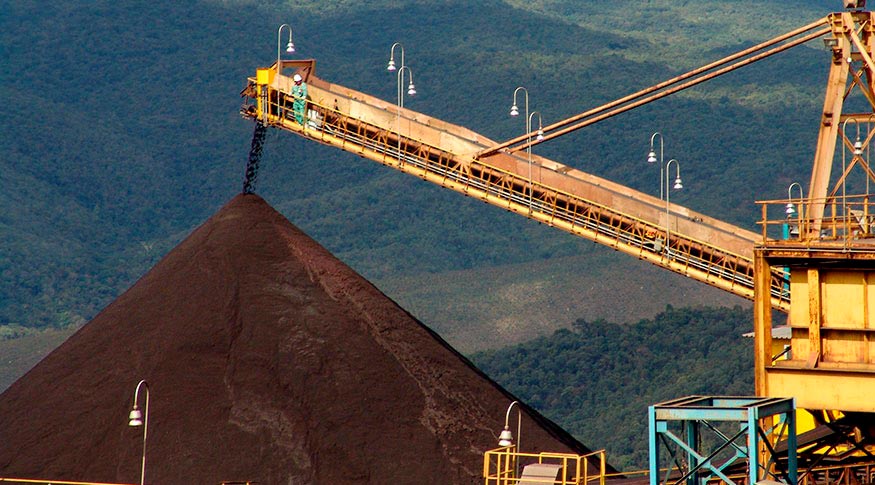Producer Price Index
Industry inflation is 1.94% in April
June 02, 2022 09h00 AM | Last Updated: June 04, 2022 01h17 AM

Prices in the industrial sector rose in April 2022 from March. From February to March, the change was 3.12%. The index that records the cumulative result inthe last 12 months, the rate was 18.00%. The cumulative indicator in the year reached 6.94%%.
Mining and quarrying industry is a highlight with the biggest change, -11.54%, and the second main influence: -0.70 p.p. The data are from the Producer Price Index - IPP, released today (2) by the IBGE.
“The result of March was high (3.12%, the highest since March 2021, 4.63%); the April index is lower, but it is the second biggest in the year and, regardless of the result in the previous month, it is only second to that in October 2021 (2.26%). The fall of prices of mining and quarrying industry was fundamental for the deceleration observed in April from March. It is worth pointing out that both crude petroleum oil and iron ore, the two products with the biggest weight in the sector, recorded their negative change explained due to oscillations of international prices and appreciation of the real. Manufacturing industr recorded price rises: in March, 2.66%, and in April, 2.81%, says Alexandre Brandão, manager of analysis and methodology.
The IPP measures the change in prices of products at the "factory gate", without tax or freight, of 24 activities of mining and quarrying and manufacturing industries. Eighteen of them recorded increases in March. /p>
The four biggest changes were those of: mining and quarrying industry (-11.54%); petroleum refining and biofuels (6.57%); pharmaceuticals (6.51%); and basic metals (6.00%). Petroleum refining and biofuels (0.80 percentage points); mining and quarrying industry (- 0.70 p.p.), other chemicals (0.45 p.p.) and food products (0.44 p.p.) were the main influences.
“An analysis of price changes from the perspective of major economic categories - which represents most of Brazilian industry -, increased less in April (1.81%) than in March (3.70%). In this case, it was also influenced by the fall of prices ofof crude petroleum oil and iron ore, besides resideu from soybean extraction, which was the only highlight in food products with a negaive change, due to the end of the harvest and the appreciation of currency,” Mr. Brandão explains.
On the other hand, in consumer goods there was acceleration of price changes, from 2.88% in March, to 3.37% in April. “Durable consumer goods were influenced by the positive change of carns, which have great relevance in the segment. Non-durable consumer goods were affected by the change in gasoline and food prices, mainly milk and dairy products - due to a rise in costs and problems in abstraction of milk basins-, besides sugar and meat. In the case of these aforementioned products, despite the appreciation of currency that affects commodity prices, international prices rose. And, finally, also in non-durable consumer goods, pharmaceutical products, whose prices are regulated, went through price adjustments in April,” says Mr. Brandão.
In the case of refining, there has been rise of prices to catch up with international prices. The sector recorded the fourth positive rate in a row, 6.57%. The cumulative index in the year reached 22.80% and the cumulative index in 12 months, to 52.14%. The sector stood out as the second biggest change in the monthly indicator, the first one cumulative in the year and in 12 months and for being the main influence in the three indicators.
In relation to the segment of other chemicals, there is the impact of international oscilation in the prices of manure, the most influential product in the sector. “The other two producs are also used in agriculture and, due to international turmoil, producers have bought products in advance to have stocks and avoid having worse problems in the coming harvest,” says the IPP manager.
More about the survey
The IPP aims at measuring the average change of sale prices received by the domestic producers of goods and services, as well as their evolution over time, signaling the short-term inflationary trends in Brazil. It is a key indicator for the macroeconomic follow up and, consequently, a valuable analytical instrument for decision makers, either public or private.
The survey investigates, in slightly more than 2,100 enterprises, the prices received by producers, free from tax, tariffs and freight, defined according the most usual commercial practices. Nearly 6 thousand prices are collected monthly. The complete tables with the results are available at Sidra.


















